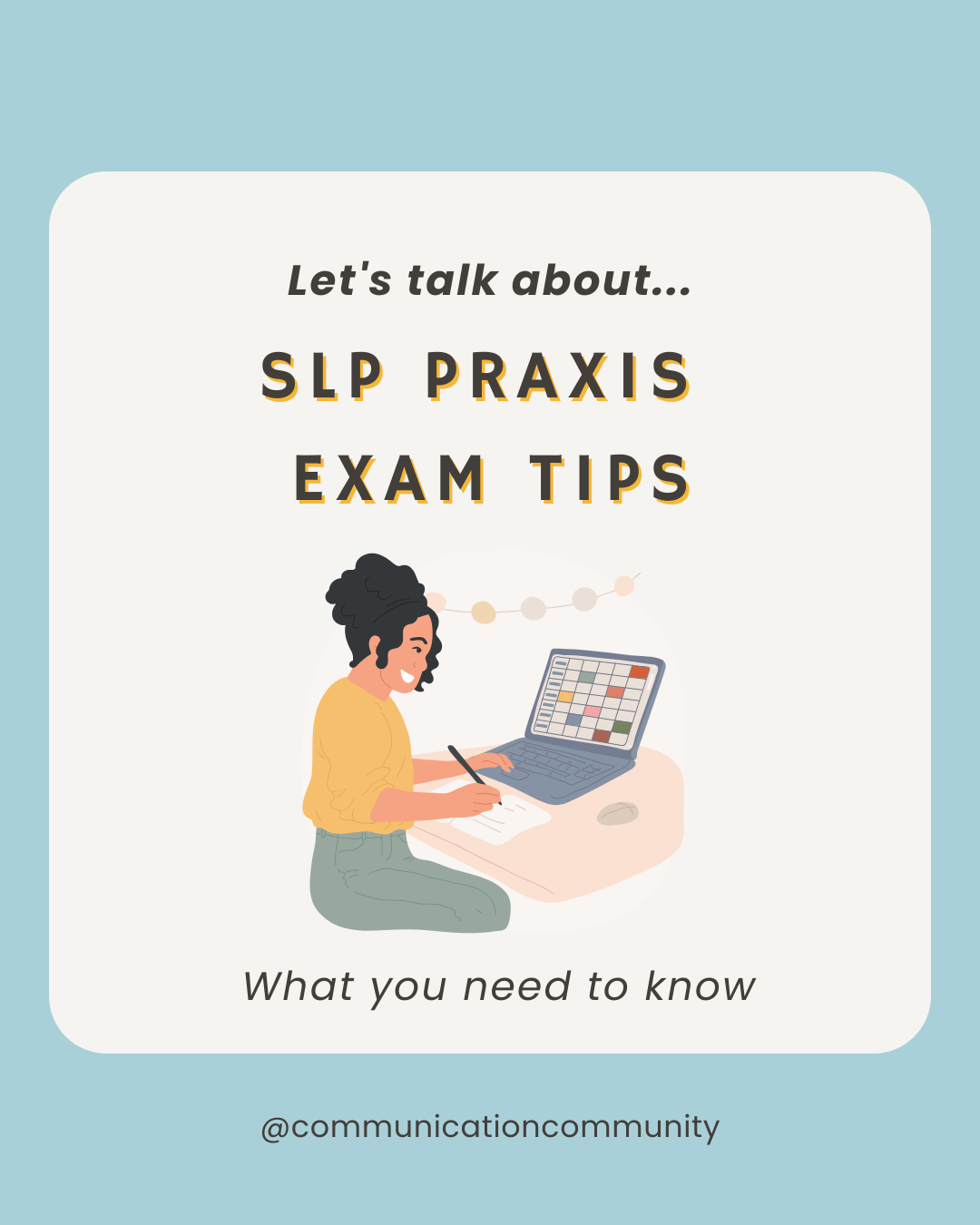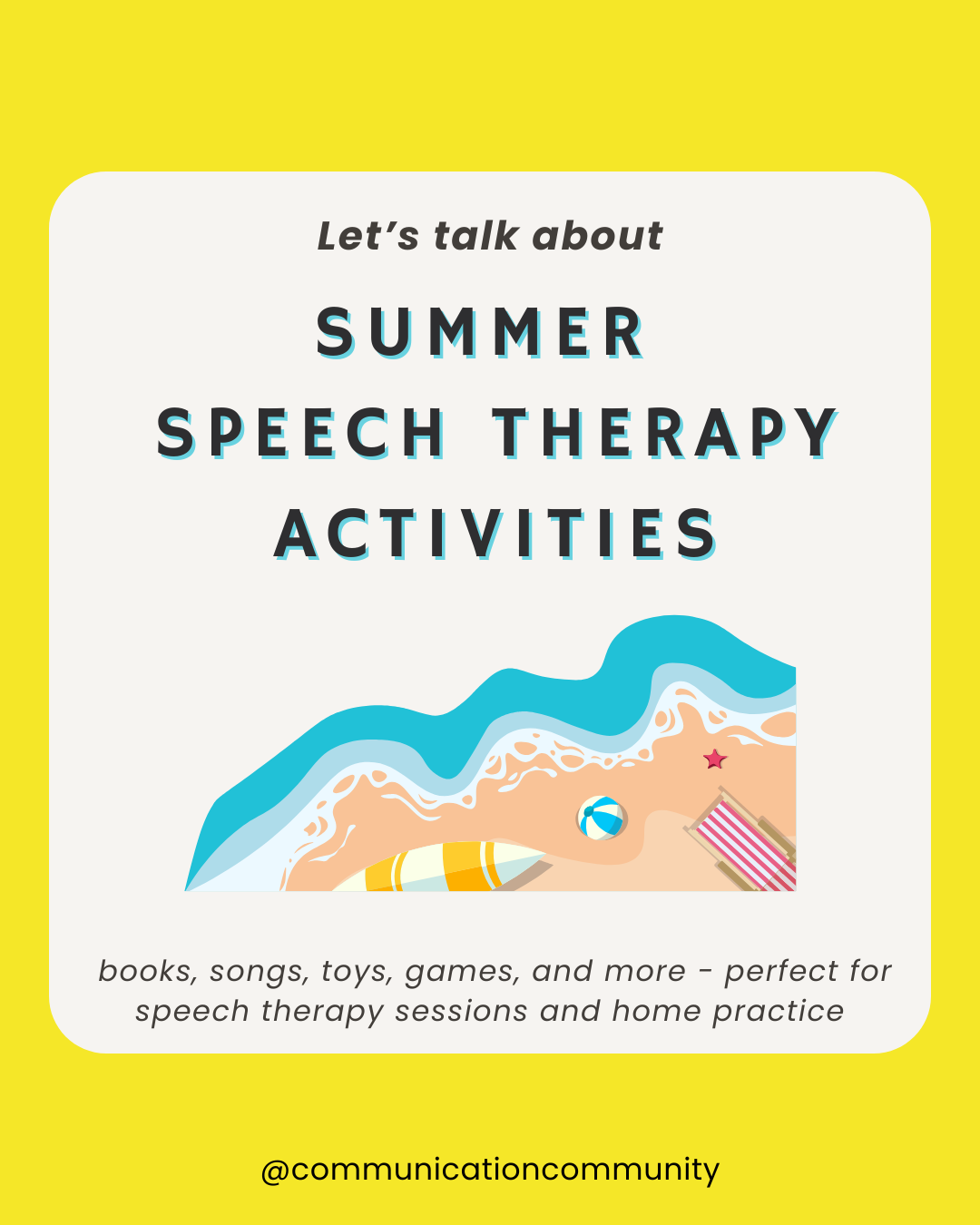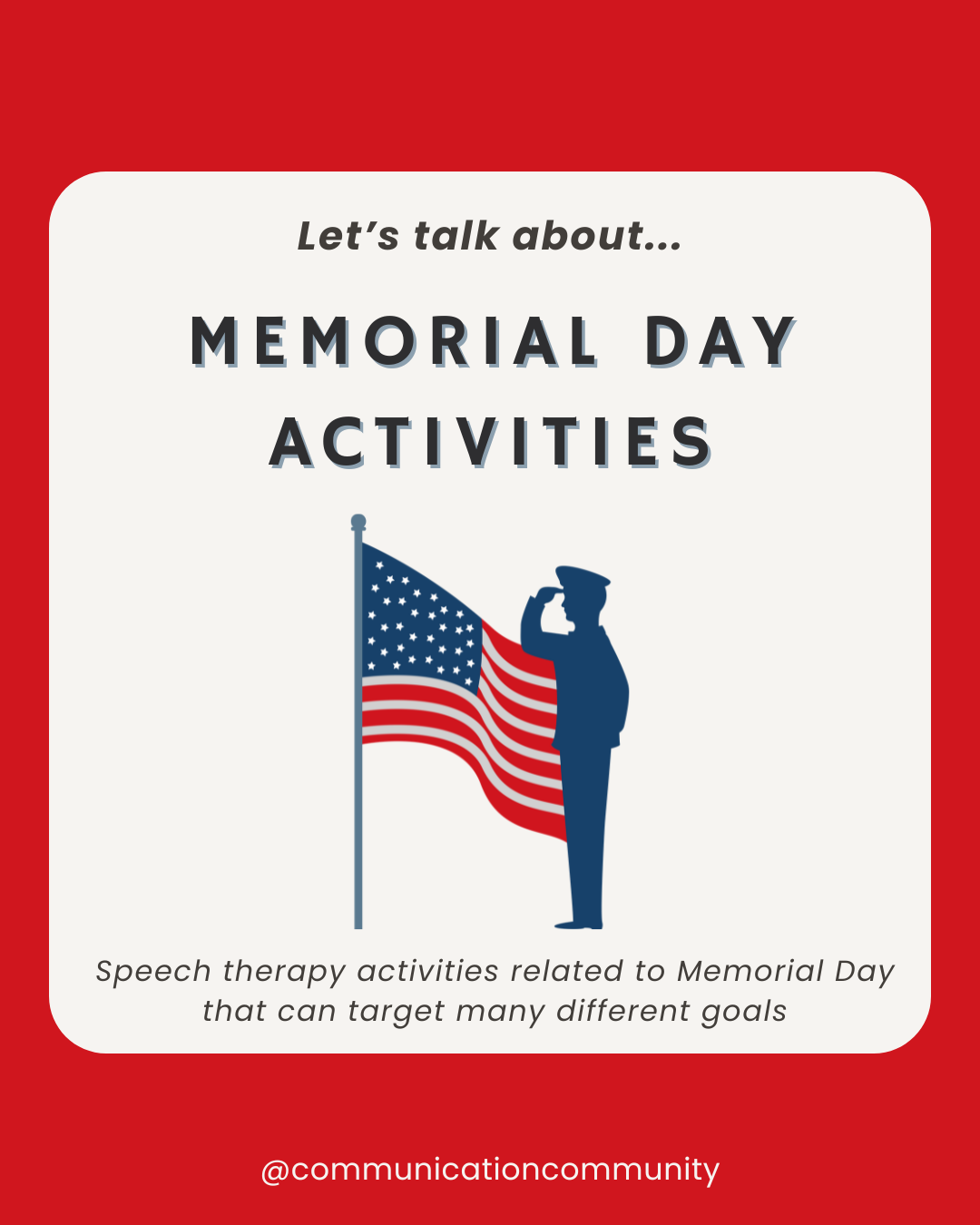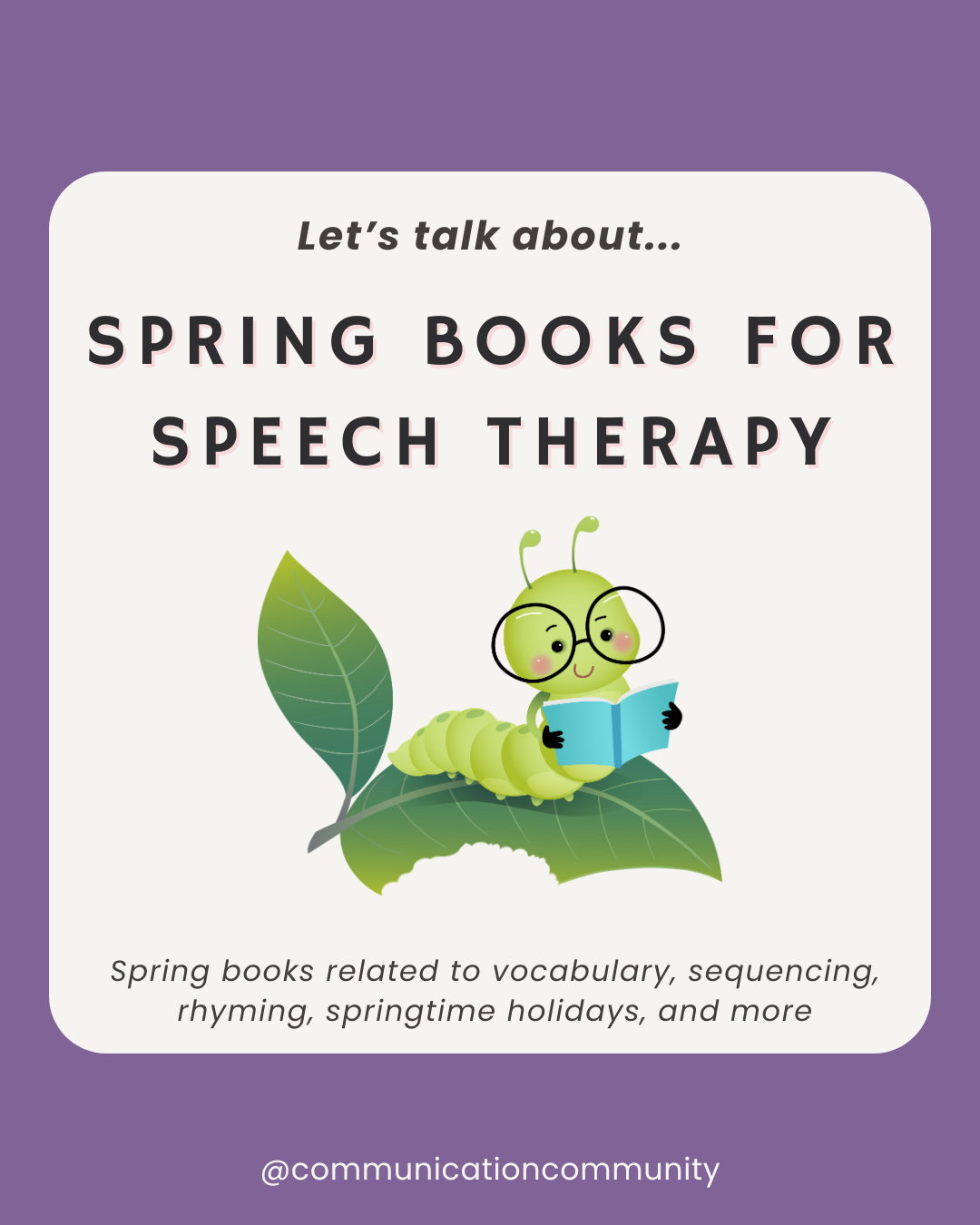This article was last updated on August 22, 2024.
What are Fluency Disorders?
Stuttering is a type of fluency disorder. Another type of fluency disorder is cluttering.
We recognize that most people who stutter (PWS) prefer the term 'stuttering' over 'fluency.' In this article, we will use the term stuttering, though we know fluency is still used clinically.
Stuttering and cluttering can occur in conjunction or in isolation from one another. Our blog post, What is Stuttering?, covers these types of speech disorders and how they may present across individuals.
When an individual stutters, their speech has stutter-like disfluencies. Some individuals have secondary behaviors related to stuttering as well. This may include a physical behavior such as overemphasized blinking or clenching a fist during moments of stuttering. PWS often speak at an effective rate (e.g., not too slow and not too fast), though their speech might sometimes be slightly slower due to the type of disfluency they are experiencing. PWS are usually aware of their disfluencies. They may also have negative feelings related to their stuttering, such as anxiety in or avoidance of certain situations, like talking in class or going through a drive-thru.
Individuals who clutter often have interruptions in their speech related to speaking very quickly or irregularly (e.g., sometimes faster, sometimes slower), irregular pauses, and less awareness of their disfluencies. They may also change topics quickly or omit syllables when speaking, which can make them hard to be understood by others. An individual speaking irregularly or omitting syllables may sound like: “Let’s go get I really like I want ice cre- chocolate!”
It is typical for any individual to have disfluencies at times, but when it occurs more frequently, consistently disrupts the flow of speech, and impacts social and/or emotional well-being, it may be considered a clinical disorder.
Clinically speaking, a stuttering disorder is diagnosed when an individual’s interruptions, or disfluencies, are present in more than 10% of one’s words.
The 3 main types of stutter-like disfluencies include repetitions, prolongations, and blocks.
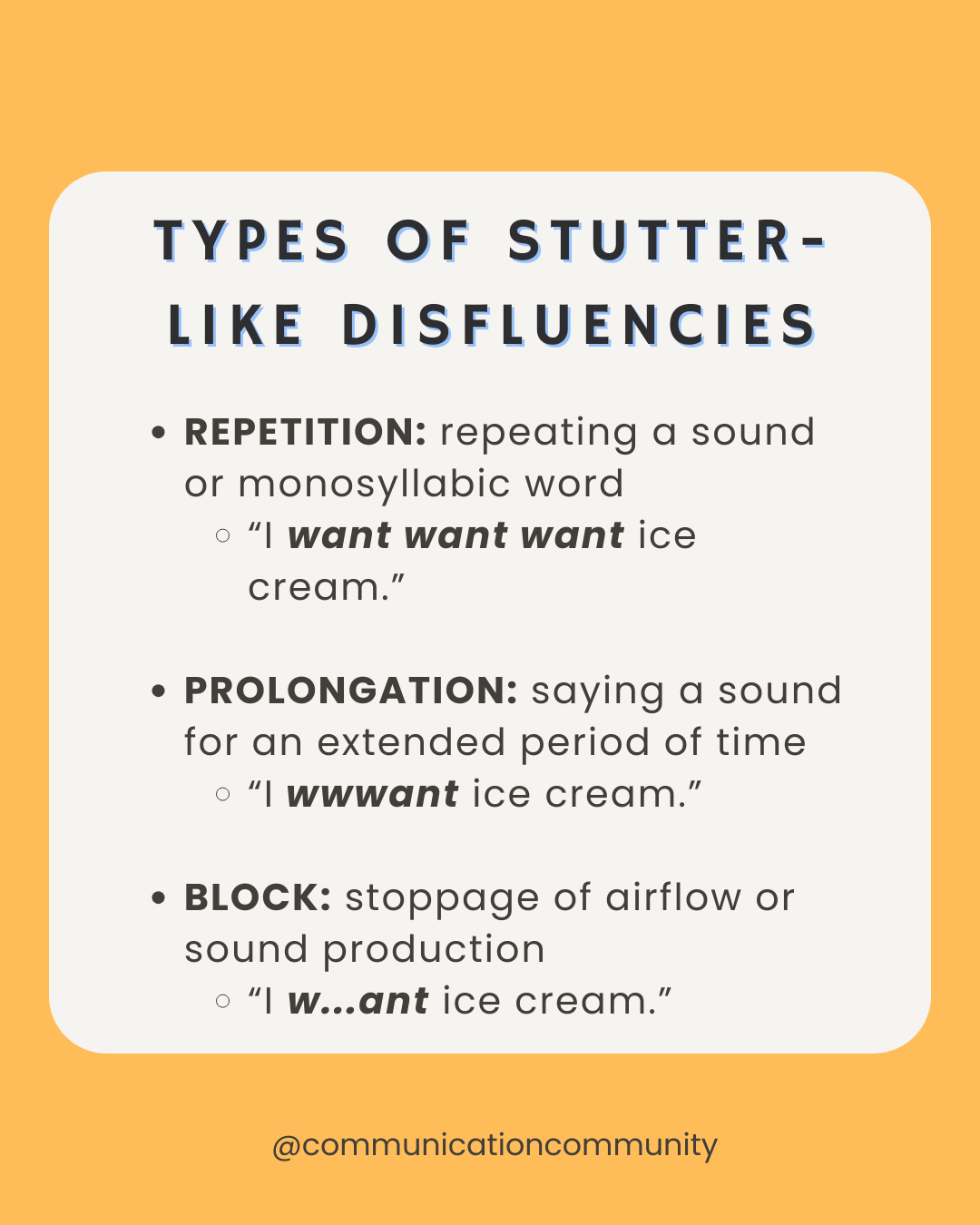
Who Needs Stuttering Goals?
Usually, if a stuttering disorder is diagnosed, it is because the individual who is going to receive therapy indicated that stuttering was impacting their life, they underwent a formal evaluation, and the results indicated that intervention was warranted. The speech-language pathologist (SLP) performing the evaluation may have had the individual complete a speech sample and record the disfluencies they heard. Formal stuttering assessments include the Stuttering Severity Instrument and Test of Childhood Stuttering. Older individuals may also complete the Overall Assessment of a Speaker’s Experience of Stuttering (OASES). The OASES is a questionnaire that measures the life impact an individual’s stuttering has and looks at areas such as reactions to stuttering and communication in daily life.
⭐Looking for extra support?
Create measurable and individualized stuttering speech therapy goals for your school-aged or adult clients with this top-selling, time-saving resource.


Get this in our TPT store or this PLUS so much more inside our Premium Community

Also available for individual purchase through our TPT and Gumroad stores!
Writing Stuttering Goals
Below you will find our Communication Community Goal Writing Formula that we use for writing all communication goals (e.g., receptive, expressive, pragmatic, AAC, play, etc.).
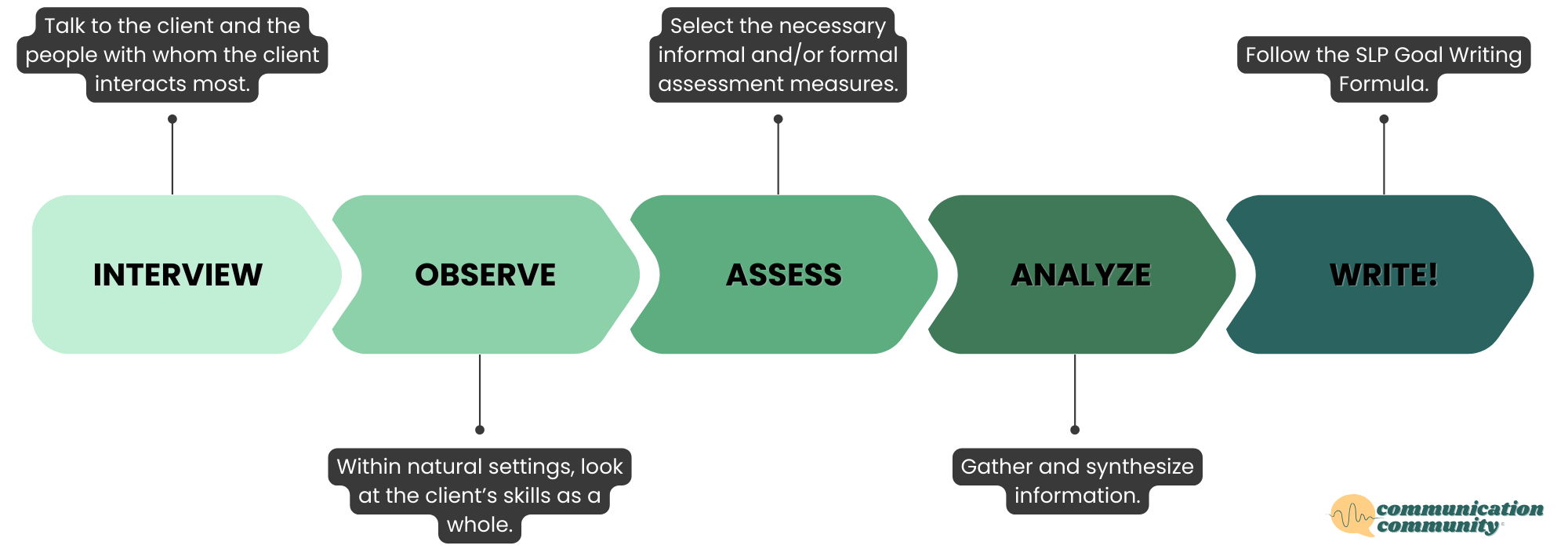
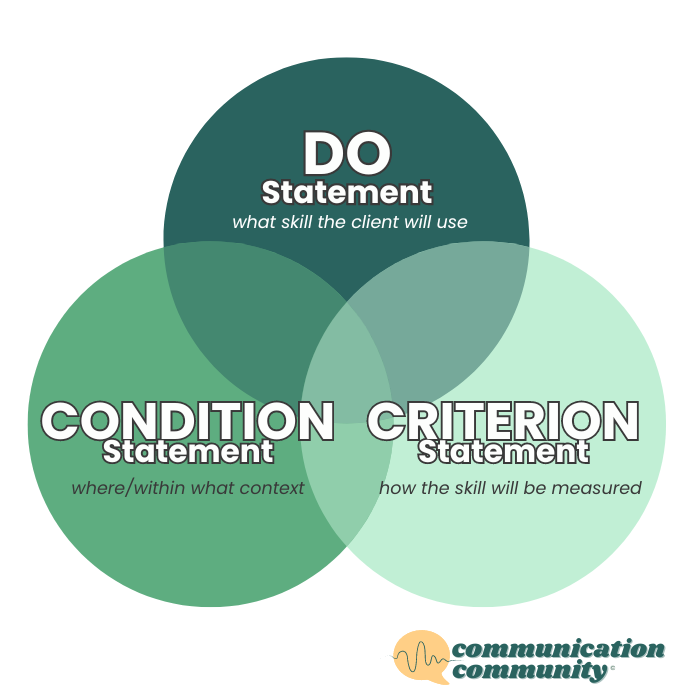
Steps for writing goals for speech and language skills (left); Communication Community goal writing formula (right)
As seen above, speech goals should be written with 3* components in mind: the DO statement, the CONDITION statement, and the CRITERION statement.
*Also commonly included is consistency (we incorporate this!). Aka, does the individual have to meet a specific criterion more than once? A common example of this may include across 3 consecutive sessions. This is usually something understood by the therapy organization/service provider and is sometimes/sometimes not included in the written goal itself. This is to ensure that the skill has been generalized and provides more reliable data that the skill has been properly mastered.
DO statement
What the client is actually going to DO and the specific skill they will be working towards.
Example: use 1 learned fluency shaping strategy (e.g., slowed speech)
CONDITION statement
The specific setting and/or context your client will work on this skill.
Example: within a 5-minute timed reading task
CRITERION statement
How the client’s performance will be measured.
Example: in 75% of opportunities
DO + CONDITION + CRITERION
Example: [Client] will use 1 learned fluency shaping strategy (e.g., slowed speech), within a 5-minute timed reading task, in 75% of opportunities.
There you have it! An example using our Goal Writing Formula containing the DO + CONDITION + CRITERION (don’t forget to think about consistency!) for increasing fluent speech.
Free Stuttering Goal Bank
Our stuttering goal bank is organized based on the most common treatment approaches to stuttering therapy: speech modification, stuttering modification, avoidance reduction, and acceptance commitment. It should be noted that there may be some treatment strategies that are preferred for younger individuals who stutter as compared to adolescents and/or adults who stutter. The personal perceptions and feelings of the person who stutters should also be taken into account as well and may influence whether you move forward with a direct or indirect treatment approach. We also have a post specifically for cluttering goals.
Speech Modification Strategies
These promote fluency-enhancing techniques. Common types include slowed speech, light contacts, easy onset, relaxed breathing, stretched speech/continuous phonation, pausing/chunking.
Example #1: [Client] will use the easy onset fluency shaping strategy, during a 5 minute conversational treatment task, in 80% of opportunities.
Example #2: [Client] will use 2 fluency shaping strategies (i.e., relaxed breathing, slowed speech), during a timed structured treatment task, with 80% accuracy.
Example #3: [Client] will use the continuous phonation strategy, during presentations to unfamiliar individuals, in 75% of opportunities.
Example #4: [Client] will use the light contact fluency shaping strategy in words and phrases, in structured language tasks, in 90% of opportunities, across 3 sessions.
Stuttering Modification Strategies
These are designed to reduce tension and modify moments of stuttering. Common types include pull-outs, relaxed stuttering, intentional stuttering, preparatory sets, and cancellations.
Example #1: [Client] will use the stuttering modification strategy cancellation, following self-identified disfluencies, throughout the duration of the treatment session, with 80% accuracy.
Example #2: [Client] will use preparatory sets, prior to moments of anticipated stuttering, within a conversational treatment task, in 75% of opportunities.
Example #3: [Client] will use pull-out strategies, during a structured reading aloud task, in 7/10 opportunities.
Example #4: [Client] will use the 3 stuttering modification strategies, in words and sentences, during structured language tasks, in 8 out of 10 trials, across 2-3 consecutive sessions.
Avoidance Reduction & Acceptance Commitment
These focus on reducing avoidant behaviors and/or fears relating to stuttering. They discuss promoting positive attitudes, beliefs, and emotions about stuttering. They are often considered to be more of a counseling/cognitive-behavioral approach.
Example #1: [Client] will self-identify avoidant behaviors secondary to his/her/their stuttering, during natural and structured treatment tasks, with 90% accuracy.
Example #2: [Client] will decrease social avoidance by participating in novel social activities/events, within community-based settings, for 3 separate events per treatment quarter.
Example #3: [Client] will introduce themselves to novel individuals by using their full name, within various academic and/or community settings, in 8 out of 10 opportunities.
If you are looking for more goal-related posts (with goal banks), check out some others we have posted:
- How to Write Receptive Language Goals
- How to Write AAC Goals
- How to Write Articulation Goals
- How to Write Expressive Language Goals
- How to Write Play Skills Goals
- How to Write Voice Disorders Goals
- How to Write Cluttering Goals
- How to Write Phonological Awareness Goals
References:
American Speech-Language-Hearing Association. (n.d.). Fluency disorders. American Speech-Language-Hearing Association. https://www.asha.org/practice-portal/clinical-topics/fluency-disorders/#collapse_2
Edwards, B. L. (2014, March 18). Avoidance-Reduction Therapy: A Success Story. American Speech-Language-Hearing Association. https://leader.pubs.asha.org/do/10.1044/avoidance-reduction-therapy-a-success-story/full/
Mangan, K., & Davies, S. H. (n.d.). Treating the Whole Person - Practical Treatment Strategies for Children and Teens that Stutter. https://www.oregonspeechandhearing.org/resources/Documents/2018 Fall Conference/Speaker Handouts/Saturday Early PM - Treating the Whole Person - K Mangan/Davies-Mangan Stuttering OSHA 2018.pdf?ref=communicationcommunity.com

![How to Write Stuttering Goals [with goal bank]](https://www.communicationcommunity.com/content/images/2024/03/How-to-Write-Stuttering-Goals---ghost-cover--1-.png)
![How to Write Apraxia Goals [with goal bank]](https://www.communicationcommunity.com/content/images/2024/07/Apraxia-Goals--1-.png)
